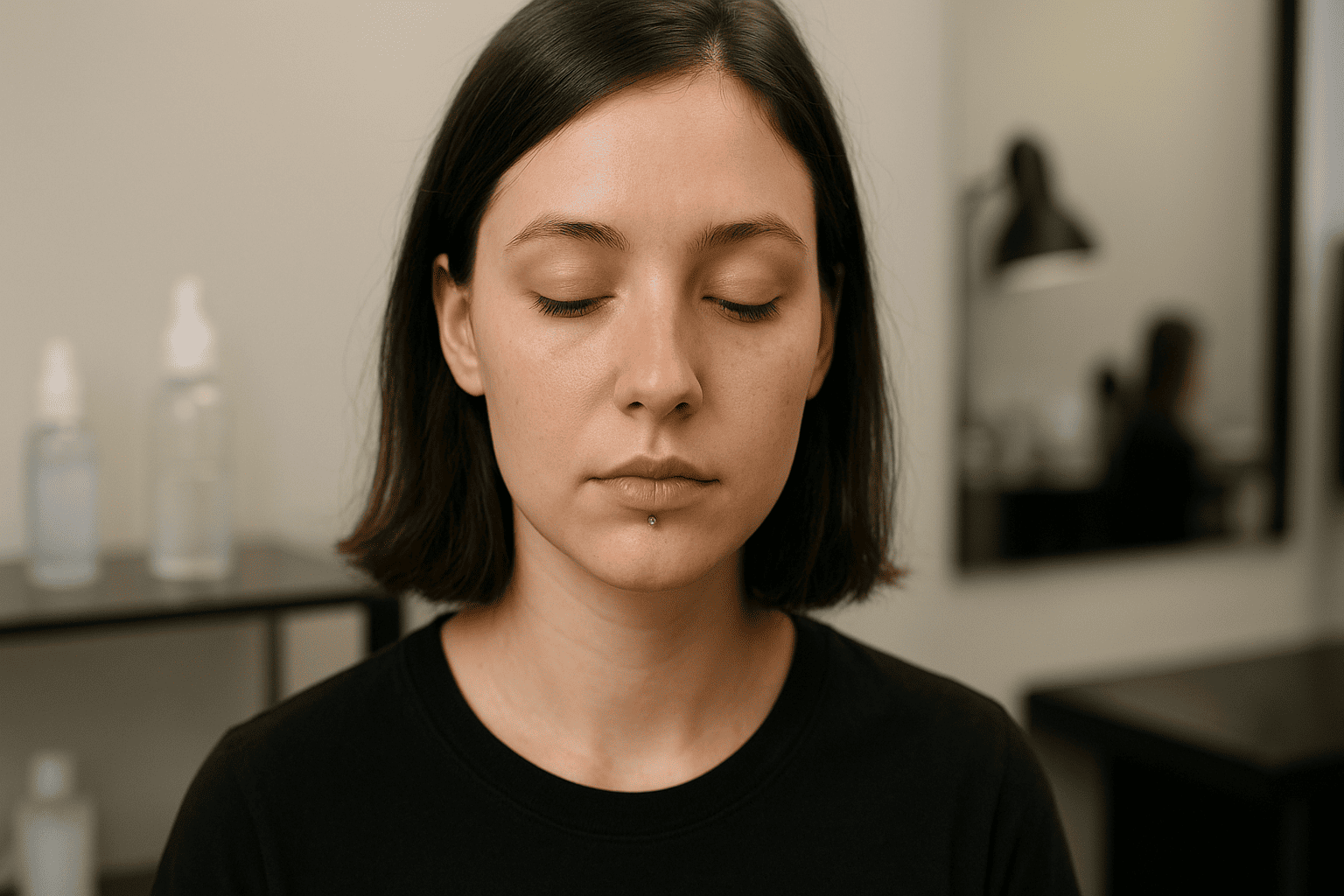Spider bite piercings are one of the most eye-catching lip piercings, but they also require careful maintenance to heal properly. If you’ve recently gotten this piercing or are considering it, understanding the right cleaning methods and what to expect during recovery will make the experience much smoother. This article will focus on aftercare and practical tips, while also pointing you to our complete Spider Bite Piercing Guide for more in-depth details.
What Makes Spider Bite Piercings Unique?
This piercing style features two separate punctures placed close together on one side of the lower lip, giving the appearance of a spider’s fangs. While the look is bold, the location near the mouth makes aftercare especially important since bacteria can easily accumulate.
Healing Timeline and What to Expect
Like most lip piercings, spider bites typically take between 6 to 10 weeks to heal, but the process varies depending on your body and how well you follow aftercare steps. Expect some initial swelling and tenderness, which should decrease within the first week if you keep things clean.
Essential Aftercare Steps for Spider Bite Piercings
Keeping your new piercing clean is the most important part of avoiding infection and irritation. Here’s what you need to do every day during the healing process:
- Rinse with saline solution at least twice daily.
- Wash your hands thoroughly before touching or adjusting your jewelry.
- Gently clean around the piercing with a sterile cotton pad soaked in saline.
- Rinse your mouth with an alcohol-free, antimicrobial mouthwash after meals.
- Let the piercing air dry instead of wiping it with towels or cloths that can carry bacteria.
Things to Avoid During Healing
Spider bite piercings can easily become irritated if you don’t avoid certain habits and products. Here are the most important things to steer clear of:
- Do not use alcohol or hydrogen peroxide – they dry out the skin and slow healing.
- Avoid smoking or cut down as much as possible since it increases infection risk.
- Stay away from spicy, acidic, or overly hot foods in the first week.
- Do not twist or play with the jewelry.
- Avoid oral contact and kissing until the piercing is healed.
Common Issues and How to Handle Them
Even with good care, you might notice some common piercing concerns during healing. Here’s what they mean and what you can do:
| Issue | Possible Cause | What to Do |
|---|---|---|
| Swelling for more than a week | Too much irritation or friction | Continue saline soaks and avoid touching |
| Clear fluid or slight crust | Normal healing response | Keep cleaning as usual |
| Yellow discharge and pain | Possible infection | Seek professional advice |
Long-Term Care for Spider Bite Piercings
Once the piercing is fully healed, you’ll want to keep it looking good and avoid future problems. Here are some long-term care tips:
- Continue cleaning periodically, especially after eating sticky or sugary foods.
- Choose high-quality jewelry made from titanium, surgical steel, or solid gold.
- If you plan to change your jewelry, wait at least 8 weeks and have it done by a professional.
How This Differs From Other Piercings
Unlike ear piercings, spider bites are in an area that moves constantly and comes into contact with food and drinks, making them more prone to irritation. This means a strict cleaning routine and good oral hygiene are non-negotiable for a smooth healing process.
Final Thoughts
Spider bite piercings make a strong statement, but the key to keeping them healthy is proper aftercare.
Disclaimer: This guide is for informational purposes and does not replace advice from a professional piercer. Always consult a qualified piercer for personalized guidance.



